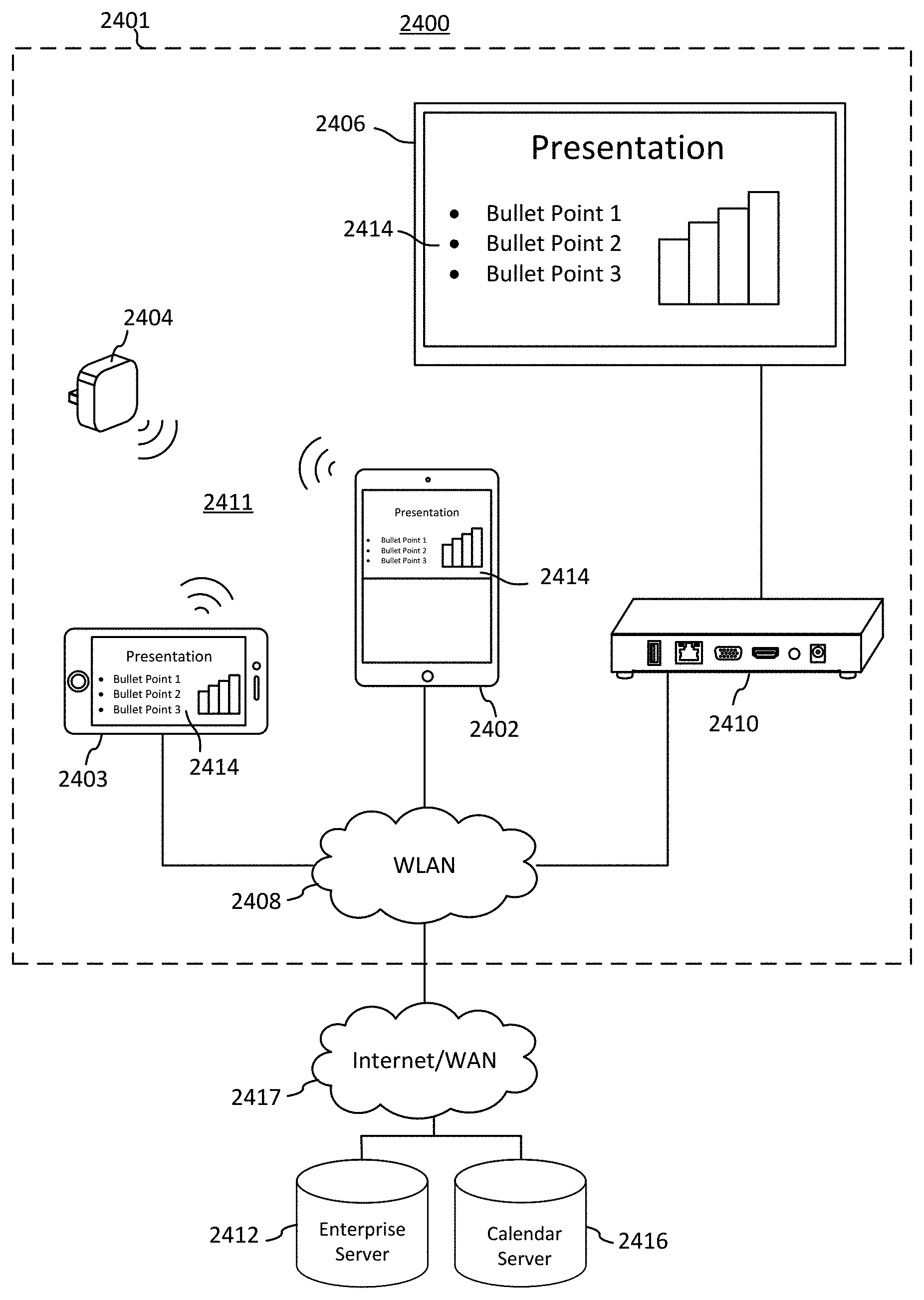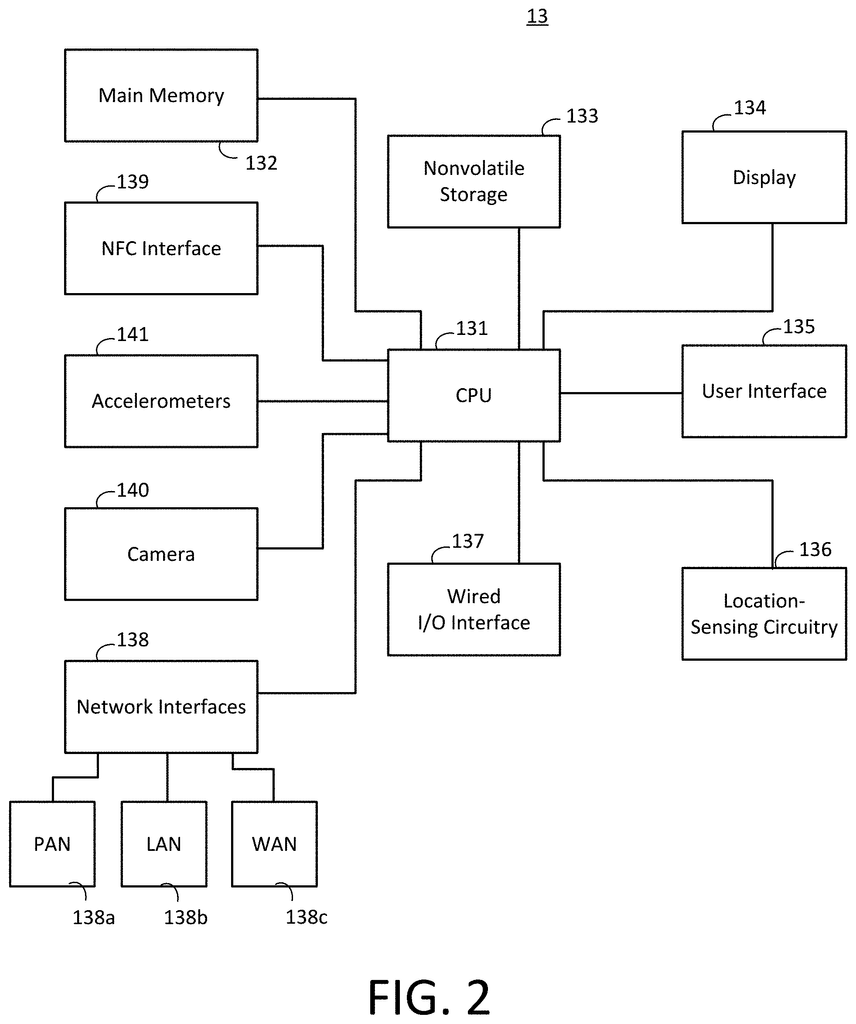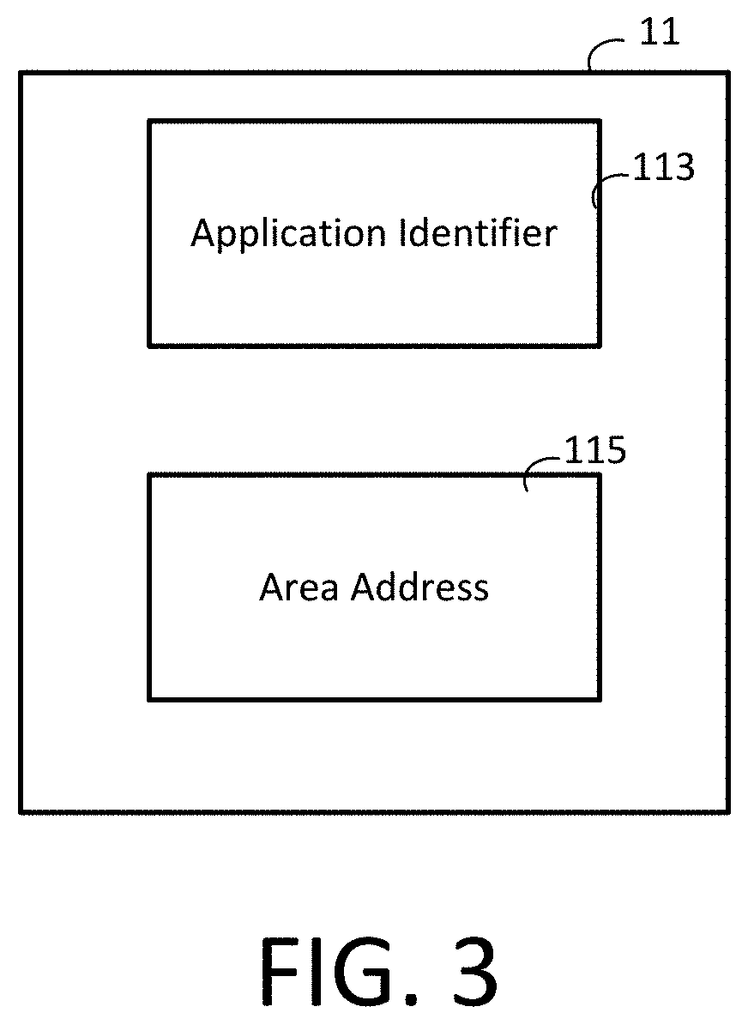Invented by Fred Bargetzi, Daniel Jackson, Brian Donlan, Crestron Electronics Inc
Radio frequency beacons are small devices that emit a signal that can be picked up by nearby devices. This signal can be used to trigger a variety of actions, such as opening a webpage or launching an app. In the context of live presentations, radio frequency beacons can be used to share presentation content with audience members in real-time.
One of the key benefits of using radio frequency beacons for live presentation content sharing is that it eliminates the need for cables and other physical connections. This makes it easier for presenters to move around the room and engage with their audience, without being tethered to a specific location. It also makes it easier for audience members to access presentation content, as they can simply use their own device to connect to the beacon.
Another benefit of using radio frequency beacons for live presentation content sharing is that it allows for more interactive presentations. Presenters can use the beacons to trigger polls, quizzes, and other interactive elements, which can help to keep the audience engaged and interested in the presentation. This can be particularly useful for training sessions, where audience members may need to retain a lot of information.
The market for initiating live presentation content sharing via radio frequency beacons is expected to grow significantly in the coming years. As more businesses and organizations adopt this technology, it is likely that we will see new and innovative use cases emerge. For example, radio frequency beacons could be used to create interactive museum exhibits, or to provide real-time information to conference attendees.
Overall, the market for initiating live presentation content sharing via radio frequency beacons is an exciting and rapidly evolving space. As this technology becomes more widely adopted, it has the potential to revolutionize the way we share information and engage with audiences.
The Crestron Electronics Inc invention works as follows
Systems, methods and modes for live presentation sharing between meeting presenters and attendees’ portable electronic devices during meetings, and specifically for viewing presentation material on a portable electronic display on a meeting room screen during a meeting are disclosed. The system includes a presentation gateway that can receive and transmit presentation content to a meeting area display during a meeting. A portable electronic device is also included in the system. The presentation content on the portable electronic device is displayed substantially in synch to the presentation content on the meeting room display. This is done by continuously capturing an image from the presentation content and comparing it to a previously saved picture to determine if the new image is substantially the same as the previous saved image. If not, the portable communication device saves a new image that’s not substantially the same as the previously saved image.
Background for Initiating live presentation content sharing via radio frequency beacons
Technical Field
The invention relates to control network, specifically control networks leveraging RF Communication Standards, such as near-field communication standards and Bluetooth Low Energy standard for distribution of presentations. More specifically, systems, methods and modes for live presentation sharing among meeting presenters’ and attendees’ portable electronic devices during a conference.
Background Art
To present their content, users connect to a screen in a conference room via a series of awkward wired connections. This connection is becoming more convenient for many users. Unfortunately, wireless solutions are still insecure and need to be improved.
There are solutions that allow screen sharing between portable electronic devices and conference room displays screens. This can be achieved by pairing the content source or portable electronic device with a presentation rendering unit connected to the display screen in the conference room. This can be done in two ways currently, but both require user interaction. The presentation rendering device’s connection parameters must be input to the portable electronic devices in one implementation. These connection parameters are not always easily accessible and can be tedious to enter. This can make it difficult and unpractical. Another way is for the portable electronic device to perform a discovery stage, which allows it to find electronic devices that can be connected to via Wi-Fi networks. The device will then display a list of electronic devices to choose from. There may be many conference rooms in large corporate buildings. A presenter may find it difficult to choose the right display screen from a large number of devices. Users want a simpler way to wirelessly connect their electronic devices to the audiovisual equipment in a conference hall.
Moreover, all meeting attendees must view and follow the presentation from a single screen in the meeting room. This screen can be accessed at the command of a presenter. However, it is not always possible for everyone to see the screen in a large room or if the screen is too small. Because everyone is looking at the same screen, it can be difficult for people to follow along with the pace of the presenter. Attendees bring along their portable electronic devices to meetings, and they want to be able to view the presentation on those screens. Although there are solutions for sharing content with attendees’ portable electronic devices, these solutions have many drawbacks and require improvements in functionality.
A presenter can share a presentation by either sending an electronic copy to attendees or posting a link to it on a website. It is possible that the presenter does not have access all attendees’ email addresses. Sending an email with the presentation to large numbers of people at large meetings can be cumbersome and inconvenient. Presenters and attendees might not be able to access a website to download or upload a presentation. Participants will have to navigate through the local copy manually. A copy of the software required to create the presentation is needed to navigate the local copy. This can be expensive and difficult for some users.
There are also solutions that can capture static images of a presentation at predetermined intervals and then provide these images via a website to meeting attendees so they can view them on their electronic devices. This solution requires that the meeting attendee enter an IP address to access the website. The meeting attendee might not have access to this address. This solution is also susceptible to inaccuracy and latency because static images are not updated at the predefined intervals. This may cause problems for presenters who navigate through slides at a slower pace. Slides and slide content can be skipped, so the presenter might be showing slides that have been updated on the main meeting screen. The meeting attendee must wait for the slides to update to appear on his screen.
Meeting attendees often want to make additional notes, zoom in on a slide to see the content better, go back to slides from before, or do other manipulations. The aforementioned systems do not allow for the annotation or manipulation of the shared presentation. Attendees must either manually take notes or use a separate program to keep track of notes. It is sometimes difficult to fit the notes into the same screen as the shared presentation. The attendee will need to keep track of a variety of files. It is not easy to annotate the presentation in the presentation creating program. This can lead to the destruction of the original presentation. As such, the attendee must have a copy the presentation software.
As shown above, there is no way to share presentation content among a variety of portable electronic devices during an individual meeting. Building automation has been made possible by the ever-expanding range of smart devices. Smartphones and tablets offer a variety of control options for commercial and residential buildings. Although smart devices have had a positive effect on home automation, the existing systems don’t fully utilize the current generation of smart phones and tablets. Short range communication technologies like Bluetooth or near field communication (NFC), are one example of this capability.
NFC” refers to a standard for short-range wireless communication technology. It uses magnetic field induction to allow communication between electronic devices within close proximity. NFC technology allows NFC-enabled devices to communicate with each other or retrieve information from NFC tags. This allows users to conduct intuitive, secure, and contactless transactions, gain digital content, and connect electronic devices by simply touching or bringing them in close proximity.
NFC operates in the 13.56MHz standard frequency band, with a range of approximately 2-4 cm. It offers data rates in a range from 106 kbits/s up to 424kbit/s. NFC standards are communication protocols and data exchange formats that are based upon existing radio frequency identification standards (RFID). These standards include ISO/IEC 18092 as well as those developed by the NFC Forum (a non-profit industry group that promotes NFC technology and certifies devices to comply with it). The NFC standards cover two types of operation: passive and active. Both communicating devices can transmit data in active mode. Each device generates and deactivates its own electromagnetic field to transmit data. Passive mode is where only one device (the initiator devices) generates an electromagnetic fields. The target device, usually an NFC tag modulates the electromagnetic force to transmit data. NFC protocol states that the initiator device generates the electromagnetic field. The initiator may provide the electromagnetic field, and the target device can draw its operating power.
Bluetooth” is a set specifications for short-range wireless applications. They are developed, tested and maintained by the Bluetooth SIG. Bluetooth Low Energy technology was introduced in Bluetooth Core Specification version 4.0. It allows devices to operate on coins-cell batteries for up to a year.
Bluetooth Low Energy works in the same frequency range (2402-2480MHz) as the?classic? Bluetooth technology uses a different set o channels. Bluetooth Low Energy uses forty channels at 2 MHz instead of the seventy-nine channels that Bluetooth technology has. Bluetooth Low Energy technology also uses a different frequency-hopping scheme to Bluetooth technology. These improvements make Bluetooth Low Energy ideal for discrete data transfer, rather than streaming like in previous Bluetooth technologies.
To provide robust presentation sharing systems, it is important to make full use of the short-range communication capabilities of mobile devices such as tablets and smart phones. There is a need for methods and systems that allow meeting presenters and attendees to quickly pair their portable electronic devices with the presentation software. This allows them to present their presentation content on a screen and allows attendees to see it at their devices. They can also annotate, manipulate and share it during meetings.
It is the object of the embodiments that at least some of the problems or disadvantages discussed above are substantially solved, and at least one or more advantages are provided below.
It is therefore an aspect of the embodiments that provide systems, methods and modes for live presentation sharing among meeting presenters’ and meeting attendees’ electronic devices during meetings that will eliminate or minimize the problems of the type previously mentioned.
It is also an aspect of the invention to provide systems and methods that allow for quick and easy pairing of attendees’ electronic devices with the presentation system in order to enable live presentation sharing.
It is also an aspect to the embodiments to provide systems and methods for presenting presentation material from meeting presenter portable electronic devices on a meeting room screen during a meeting.
It is also an aspect to the embodiments to provide systems and methods for viewing presentation content on portable electronic devices of meeting attendees during a meeting.
Click here to view the patent on Google Patents.




